When To Replace Your Wood Stove Pipe 2024
- October 3, 2023
- 0 comment
As winter approaches, it’s essential to check the condition of your wood stove pipe. This critical part of your stove setup ensures safe and efficient operation, but it doesn’t last forever. Typically, a stove pipe needs replacing every 15-20 years, but frequent use and the type of fuel burned can shorten its lifespan. Knowing when to replace your stove pipe can prevent hazards and keep your cozy evenings by the fire safe. Let’s explore the signs that indicate it’s time for a new stove pipe.
1. The Signs of Rust and Corrosion
Rust and corrosion might seem like minor issues, but when it comes to the safety and efficiency of your wood stove, they’re anything but. If you’ve ever wondered why rust appears and how it can impact your stove pipe, let’s delve deeper.

The Chemistry Behind Rust
Rust is essentially iron oxide, a compound formed when iron reacts with oxygen in the presence of water. Since most stove pipes are made from metal, including iron components, they are vulnerable to this reaction. And while wood stoves are all about burning wood, the process produces water vapor which, combined with the oxygen from the air, can facilitate rusting.
The Effects of Smoke
But, water vapor alone isn’t the sole culprit. When wood burns, it releases a cocktail of chemicals. Some of these are corrosive, especially when mixed with moisture. Over time, this corrosive mix can speed up the oxidation process, making the stove pipe more susceptible to rust and corrosion.
Spotting the Early Warning Signs
Flaky Rust Spots
Rust often starts as tiny, inconspicuous patches. They might seem harmless at first, but over time, they can grow, leading to significant damage. If you spot these small patches, it’s a sign that moisture has been at work.

Thinning Sections of the Pipe
As rust progresses, it can eat away at the metal, leading to thinning sections. You might not immediately see these spots, but you might notice them upon touch. Thinner sections can become weak points, vulnerable to heat and pressure.
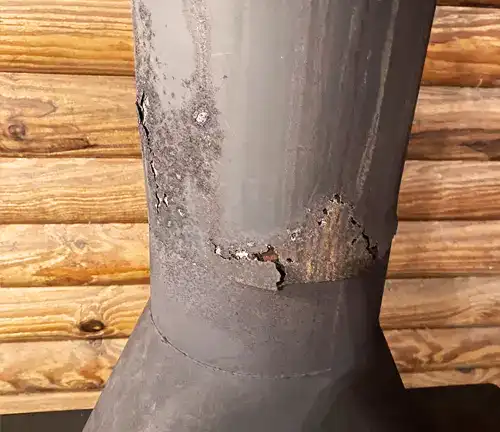
Holes or Cracks
The advanced stage of rusting can manifest as holes or cracks. If your stove pipe has reached this stage, it’s not just an efficiency concern; it’s a safety hazard. Harmful gases, like carbon monoxide, can escape through these openings, posing risks to those in the home.
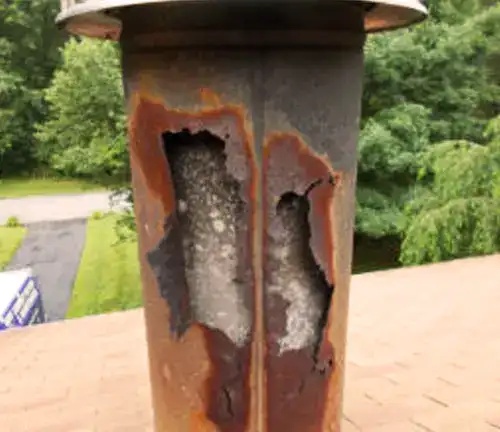
The Bottom Line
Never underestimate the power of moisture and time. While your stove pipe might seem sturdy and unyielding, rust and corrosion can silently weaken it. Regular checks, especially during wetter seasons or after periods of non-use, are crucial. If you notice the warning signs, prioritize the safety and health of your household and consider a replacement. Remember, the wood stove pipe is more than a conduit for smoke – it’s a vital component in the safety chain of your wood-burning system.
2. Warping and Discoloration
A wood stove pipe stands sentinel amidst the roaring flames of the stove, channeling smoke and ensuring that the fire burns safely and efficiently. Yet, the very essence of its job exposes it to high temperatures, which can sometimes result in warping and discoloration.

The Science Behind Warping
Metals, like the ones commonly used in stove pipes, expand when heated. This phenomenon, known as thermal expansion, is a natural response to heat. However, the challenge arises when different parts of the stove pipe experience varying degrees of heat. This uneven heating can cause some sections to expand more than others, leading to a warped shape.
Decoding Discoloration
When metals are exposed to high temperatures, they can undergo oxidation processes, leading to a change in color. Depending on the type of metal, the presence of impurities, and the exact temperature range, a stove pipe can exhibit a rainbow of colors, ranging from golden-yellow and purple to deep blues.
Identifying the Warning Signs
- Changes in Fit: A warped stove pipe might not align perfectly with the stove or chimney connector. If you start noticing gaps or if the pipe doesn’t sit as seamlessly as it once did, it’s an indication that warping has occurred.
- Visible Bending: Any noticeable bending or deviation from the pipe’s original straight shape is a sign of warping. This can impact the efficiency of smoke and gas flow and can even pose a fire hazard in severe cases.
- Shifts in Color: While a slight change in color due to oxidation might be benign, drastic discoloration can indicate prolonged exposure to extreme heat. In such cases, the metal’s structural integrity might be compromised, making it more susceptible to damage.
Why It Matters
While a slightly discolored or warped stove pipe might seem like just an aesthetic concern, it can hint at underlying issues:
- Safety Concerns: A warped pipe may not channel smoke and gases efficiently, leading to potential buildup or leaks.
- Reduced Efficiency: An improperly fitting or bent stove pipe can impact the draft, essential for optimal combustion in the stove.
- Potential Fire Hazard: Severe warping can create weak spots, which, when exposed to high temperatures and sparks, can become potential ignition points.
Your wood stove pipe, like any hero facing trials, bears the brunt of heat and time. Recognizing the signs of warping and discoloration is not just about maintaining its aesthetic appeal but ensuring the safety and efficiency of your wood stove setup. Regular inspections, especially during peak usage seasons, can go a long way in ensuring that your stove pipe remains both a guardian and a guide for your wood stove’s flames.
3. Build-up of Creosote
In the realm of wood-burning, creosote is an antagonist that’s often underestimated. This dark, viscous residue might seem like just another byproduct of burning wood, but it has the potential to cause significant problems. Dive into the story of creosote, why it forms, and how to tackle this sticky adversary.
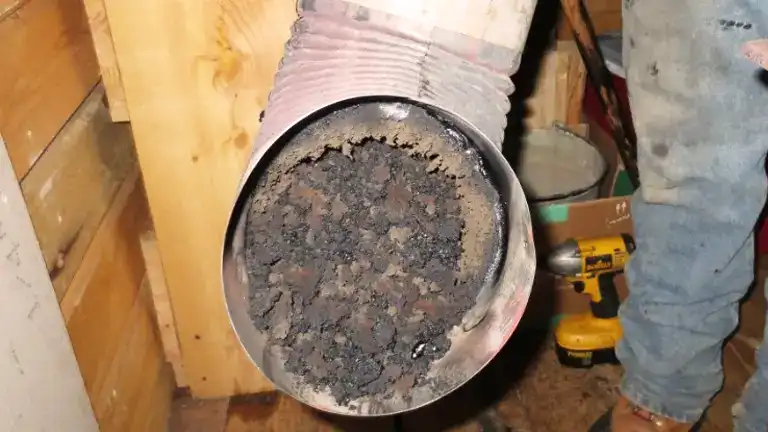
Creosote’s Origin Story
Every time wood burns, it releases a plethora of compounds. While many of these are harmless gases, some are unburned wood particles. When these particles rise with the hot smoke and come in contact with the cooler surface of the stove pipe, they condense, forming a creosote.
The Three Acts of Creosote
Creosote can manifest in three different stages, each with its own characteristics:
- First Degree: This is a light, sooty layer that can easily be brushed away. At this stage, it’s more of an annoyance than a threat.
- Second Degree: Here, creosote becomes flaky and crunchy. These deposits are harder to remove than the first degree, often requiring specialized tools.
- Third Degree: This is creosote at its most treacherous. It’s thick, tar-like, and has a shiny appearance. At this stage, it adheres strongly to the stove pipe walls and is a significant fire hazard.
The Dangers Lurking in the Shadows
- Reduced Efficiency: Creosote buildup narrows the internal diameter of the stove pipe, which can hamper the flow of smoke and reduce the efficiency of your wood stove.
- Fire Hazard: Creosote is highly flammable. A substantial buildup, especially of third-degree creosote, can ignite, leading to chimney fires.
- Toxic Fumes: Thick layers of creosote can result in incomplete combustion, leading to the release of harmful gases, including carbon monoxide.
Battling the Creosote Menace
- Regular Cleaning: Cleaning your stove pipe regularly can prevent excessive buildup. Depending on your wood-burning habits, it might be wise to inspect and clean the pipe multiple times during the burning season.
- Burn Dry, Seasoned Wood: Fresh, green wood contains more moisture and tends to produce more creosote. Always use well-seasoned wood to reduce creosote formation.
- Maintain Proper Draft: A well-maintained draft ensures that the smoke rises swiftly and spends less time in the stove pipe, reducing the opportunity for creosote to condense.
- Replacement: In some cases, especially with old stove pipes that have seen years of use, the creosote deposits become so thick and stubborn that cleaning becomes nearly impossible. In these situations, replacing the stove pipe might be the safest and most efficient option.
Creosote, while a natural byproduct of wood burning, needs consistent monitoring and action. Understanding its formation, recognizing its stages, and taking timely measures can help ensure that your wood stove pipe remains a conduit of warmth and safety, rather than a channel of hazards. Remember, a clean pipe not only ensures a warm home but also peace of mind.
4. Aging: It’s Just Time
There’s an innate elegance to the passage of time. Seasons change, trends evolve, and even the sturdiest of items start to show signs of wear. Your wood stove pipe, despite being a stalwart guardian against smoke and embers, is no exception to this rule. But how does aging affect these pipes, and when is it time to take action?
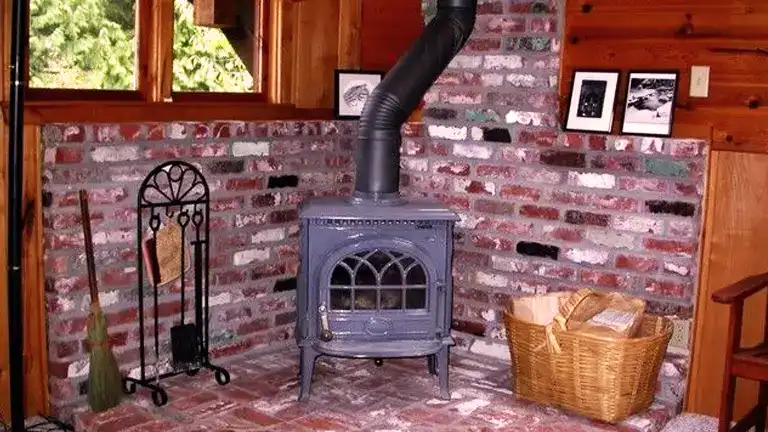
The Silent Wear of Time
A wood stove pipe might seem static, but it’s in a constant dance with the elements. From bearing the brunt of intense heat to withstanding the acidic components of smoke, it’s continuously exposed to factors that can hasten its aging.
Signs of an Aging Stove Pipe
- Surface Changes: As stove pipes age, their surface might start to look uneven, with patches of discoloration, minor dents, or the beginnings of rust.
- Brittleness: Metals, when exposed to cycles of heating and cooling, can become more brittle over time. If your stove pipe seems fragile or if it doesn’t resonate with the usual metallic sound when tapped, it might be aging.
- Joint and Seam Weakness: The points where sections of stove pipes join or where seams run can become vulnerable with time. If these areas show signs of separation or if they wobble with slight pressure, it’s a sign of aging.
The Five-Year Mark
While every stove pipe’s lifecycle will vary based on usage, quality, and external factors, the five-year mark is a good milestone for thorough inspections. Like a car’s major service or a home’s deep clean, this periodic check can help spot potential issues before they escalate.
The Wisdom of Regular Inspections
The National Fire Protection Association’s recommendation to inspect chimneys, fireplaces, and vents annually isn’t arbitrary. Regular inspections:
- Ensure Safety: An aging or damaged stove pipe can lead to smoke leaks or even fire hazards.
- Boost Efficiency: A well-maintained stove pipe ensures optimal airflow, leading to better combustion and heating efficiency.
- Save Costs: Spotting and addressing minor issues early on can prevent more significant, costlier problems in the future.
Taking Timely Action
If, during an inspection, you find that your stove pipe has aged considerably, it might be time for a replacement. Remember, safety always comes first. An older stove pipe, even if it has sentimental value or seems to be functioning, might have internal wear that’s not immediately visible.
5. Persistent Smoke or Draft Issues
The image of a wood stove conjures up visions of a warm, flickering flame and a room filled with comforting heat. But what if, instead of warmth, you’re greeted with an unwelcome haze of smoke every time you light up the stove? Or perhaps you’ve noticed that the flames aren’t dancing as vivaciously as they used to, hinting at a draft problem. Often, the silent actor behind these issues is the stove pipe.
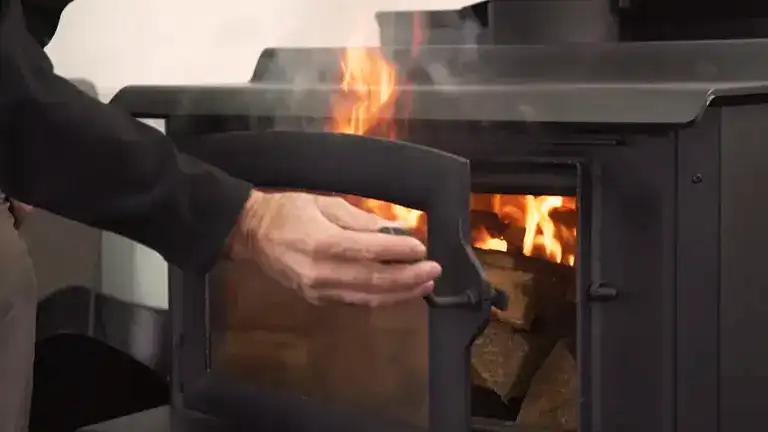
A Tale of Two Troubles: Smoke and Draft
- Smoke Intrusion: When your stove pipe isn’t doing its job efficiently, smoke can find its way into your living space instead of being directed outside. Not only is this unpleasant, but it can also be hazardous to your health.
- Draft Issues: A good draft ensures that fresh air is drawn into the stove, facilitating efficient combustion. If the draft is compromised, the stove won’t burn as efficiently, leading to decreased heat output and potential smoke issues.
The Stove Pipe Chronicles: Culprits and Causes
- Creosote Build-Up: As we’ve previously discussed, creosote can accumulate inside the stove pipe. This sticky, tar-like substance can narrow the internal diameter of the pipe, obstructing the free flow of smoke and impacting the draft.
- Deformations: Over time, due to various factors like heat, corrosion, or external impacts, the stove pipe can develop dents or deformations. These irregularities can disrupt the smooth flow of air and smoke.
- Misalignment: If a section of the stove pipe becomes loose or misaligned, it can lead to gaps or angles that hinder proper airflow.
- External Blockages: Sometimes, the issue isn’t inside the pipe but outside. Bird nests, accumulated debris, or a damaged chimney cap can all obstruct the pipe’s exit, leading to poor draft and smoke backflow.
A wood stove is only as good as its ventilation, and the stove pipe plays a pivotal role in this equation. Persistent smoke or draft issues can turn the joy of a wood stove into a chore. By understanding the role of the stove pipe and addressing its issues head-on, you can restore the clear, warm ambiance that makes wood stoves such cherished additions to our homes.
6. Upgrading Your Stove
In the exciting journey of home upgrades, getting a new wood stove is akin to getting a heart transplant for your living space. It promises better efficiency, aesthetics, and perhaps even a more eco-friendly burn. However, much like the heart relies on veins and arteries to function effectively, your new wood stove is dependent on a compatible stove pipe. Here’s a closer look at why upgrading your stove often warrants a simultaneous stove pipe upgrade.
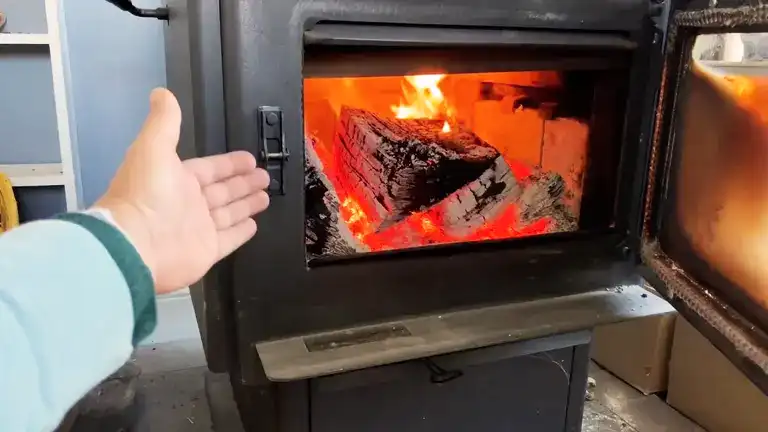
The Dynamic Duo: Stove and Stove Pipe
Just as every superhero has its trusted sidekick, every wood stove needs its trusty stove pipe. The two are intrinsically linked, and the performance of one can greatly influence the other.
Reasons to Consider a Stove Pipe Upgrade with Your New Stove
- Compatibility: Newer stove models might have different connector sizes or positions, which might not align with your existing stove pipe.
- Varying Output Temperatures: Modern stoves, especially high-efficiency models, might operate at different temperatures compared to older models. Your existing stove pipe might not be rated for these temperature ranges.
- Safety First: With advancements in technology, newer stoves often come with improved safety features. To complement this, modern stove pipes might also have enhanced safety designs, such as double-walling or specific coatings.
- Optimal Performance: Just as you wouldn’t put old tires on a brand-new car, placing an old, potentially worn-out stove pipe with a new stove might hinder the stove’s performance. You might not get the full efficiency, heat output, or clean burn that the new stove offers.
- Warranty Considerations: Some stove manufacturers might specify that for the warranty to remain valid, the stove needs to be paired with a certain type of stove pipe or one that meets specific standards.
- Aesthetics: A shiny, new wood stove paired with an aged, possibly tarnished stove pipe might be visually jarring. Upgrading both ensures a harmonious look, enhancing the overall ambiance of your space.
Tips for Upgrading Your Stove Pipe:
- Consult the Stove Manual: Always refer to the installation and safety guidelines provided by the stove manufacturer. They’ll provide specifications for the stove pipe, including diameter, material, and temperature ratings.
- Professional Installation: Given the intricacies and safety implications of installing a stove and stove pipe, consider hiring a professional. They’ll ensure that the installation meets safety standards and operates at peak efficiency.
- Maintenance Remains Key: While upgrading is a significant step, remember that routine maintenance is vital. Even the best stove and stove pipe combinations need regular checks and cleaning to function optimally.
While the thrill of getting a new wood stove is undeniable, it’s essential to remember the silent partner in this duet: the stove pipe. By ensuring both components are upgraded in tandem, you set the stage for a safer, more efficient, and more harmonious wood-burning experience. After all, in the symphony of home heating, both the stove and its pipe need to play in perfect harmony.
Conclusion
Your wood stove pipe is more than just an exit route for smoke; it’s a silent guardian ensuring your safety and your stove’s performance. By recognizing the signs of wear and tear and understanding when replacement is necessary, you can ensure that your winter nights remain as dreamy as they should be. So, the next time you light up your wood stove, spare a thought (and perhaps an inspection) for the pipe that works tirelessly in the background.
FAQs
- Why do stove pipes wear out faster than the stoves themselves?
While both the stove and its pipe are exposed to high temperatures, the stove pipe has the added challenge of channeling smoke, which carries moisture and corrosive chemicals, leading to faster wear and tear. - Can I patch up small holes in my stove pipe instead of replacing it?
While it might be tempting to patch up minor issues, it’s essential to understand that even small holes can release toxic gases. It’s always safer to replace sections or the entire pipe if damage is detected. - Are modern stove pipes designed to last longer than older ones?
Advancements in materials and coatings have indeed improved the longevity of modern stove pipes. However, their lifespan still depends on factors like usage, maintenance, and the quality of wood burned. - Does the color change in my stove pipe indicate a need for replacement?
While discoloration can hint at high temperatures and potential warping, it doesn’t always necessitate replacement. However, it’s a sign that you should inspect the pipe thoroughly for other damage. - If I hear a ‘pinging’ or ‘ticking’ sound from my stove pipe, is it a cause for concern?
This sound often results from the metal expanding or contracting due to temperature changes. While it’s typically harmless, consistent noises might indicate rapid temperature fluctuations and warrant an inspection. - Does the type of wood I burn affect my stove pipe’s lifespan?
Absolutely! Burning wet or resinous wood can lead to more creosote buildup, which can corrode the pipe faster. Always use seasoned hardwood for optimal pipe longevity. - Can I replace just a section of my stove pipe, or should I replace the whole thing?
If a specific section is damaged, it’s possible to replace just that part. However, ensure that the new section is compatible with the existing pipe in terms of diameter, material, and temperature rating. - Is there a ‘best season’ to inspect or replace my stove pipe?
Spring, after the heavy burning of winter, is an ideal time. This allows you to address any issues before the next burning season and ensures your stove is ready to go when the cold returns. - Do stove pipes come with an expiration date or a ‘best before’ indicator?
While they don’t have a specific “expiration date,” manufacturers might provide a general lifespan estimation. Regular inspections are the best way to determine a pipe’s health. - If my stove pipe looks fine from the outside, can I assume it’s okay inside?
External inspections are valuable, but internal damage or buildup can be hidden. Using a flashlight or a chimney inspection camera can provide insights into the pipe’s internal condition.
We’ve explored when to replace wood stove pipes, highlighting the signs of wear and the importance of timely updates to keep your home safe and cozy. Now, we’d love to hear from you! Have you had any experiences with your stove pipe that you can share? Your stories and tips could really help others in our community. Please drop a comment below and join the discussion on wood stove pipe maintenance. Let’s keep the conversation going and help each other stay warm and safe this winter!

David Murray
Forestry AuthorI'm David Murry, a forestry equipment specialist with a focus on chainsaw operation. With over 13 years of experience, I've honed my skills in operating and maintaining a wide range of machinery, from chainsaws to log splitters. My passion for the outdoors and commitment to sustainable forestry drive my work, which emphasizes safety, efficiency, and staying updated with industry advancements. Additionally, I'm dedicated to sharing my expertise and promoting environmental awareness within the forestry community.





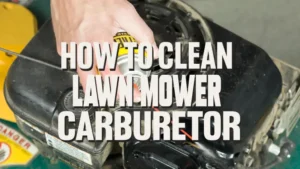







Leave your comment